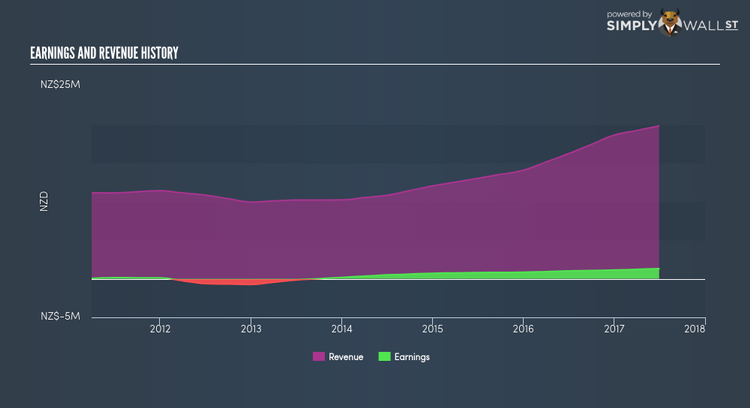How Does Solution Dynamics Limited (NZE:SDL) Affect Your Portfolio Returns?

For Solution Dynamics Limited’s (NZSE:SDL) shareholders, and also potential investors in the stock, understanding how the stock’s risk and return characteristics can impact your portfolio is important. The beta measures SDL’s exposure to the wider market risk, which reflects changes in economic and political factors. Different characteristics of a stock expose it to various levels of market risk, and the market as a whole represents a beta of one. A stock with a beta greater than one is expected to exhibit higher volatility resulting from market-wide shocks compared to one with a beta below one.
Check out our latest analysis for Solution Dynamics
An interpretation of SDL’s beta
Solution Dynamics’s beta of 0.12 indicates that the company is less volatile relative to the diversified market portfolio. The stock will exhibit muted movements in both the downside and upside, in response to changing economic conditions, whereas the general market may move by a lot more. Based on this beta value, SDL appears to be a stock that an investor with a high-beta portfolio would look for to reduce risk exposure to the market.
How does SDL’s size and industry impact its risk?
SDL, with its market capitalisation of NZD NZ$28.34M, is a small-cap stock, which generally have higher beta than similar companies of larger size. Moreover, SDL’s industry, it, is considered to be cyclical, which means it is more volatile than the market over the economic cycle. Therefore, investors may expect high beta associated with small companies, as well as those operating in the it industry, relative to those more well-established firms in a more defensive industry. It seems as though there is an inconsistency in risks portrayed by SDL’s size and industry relative to its actual beta value. There may be a more fundamental driver which can explain this inconsistency, which we will examine below.
Can SDL’s asset-composition point to a higher beta?
During times of economic downturn, low demand may cause companies to readjust production of their goods and services. It is more difficult for companies to lower their cost, if the majority of these costs are generated by fixed assets. Therefore, this is a type of risk which is associated with higher beta. I examine SDL’s ratio of fixed assets to total assets to see whether the company is highly exposed to the risk of this type of constraint. Since SDL’s fixed assets are only 12.24% of its total assets, it doesn’t depend heavily on a high level of these rigid and costly assets to operate its business. As a result, the company may be less volatile relative to broad market movements, compared to a company of similar size but higher proportion of fixed assets. Similarly, SDL’s beta value conveys the same message.
What this means for you:
You could benefit from lower risk during times of economic decline by holding onto SDL. Its low fixed cost also means that, in terms of operating leverage, it is relatively flexible during times of economic downturns. In order to fully understand whether SDL is a good investment for you, we also need to consider important company-specific fundamentals such as Solution Dynamics’s financial health and performance track record. I urge you to complete your research by taking a look at the following:
1. Financial Health: Is SDL’s operations financially sustainable? Balance sheets can be hard to analyze, which is why we’ve done it for you. Check out our financial health checks here.
2. Past Track Record: Has SDL been consistently performing well irrespective of the ups and downs in the market? Go into more detail in the past performance analysis and take a look at the free visual representations of SDL’s historicals for more clarity.
3. Other High-Performing Stocks: Are there other stocks that provide better prospects with proven track records? Explore our free list of these great stocks here.
To help readers see pass the short term volatility of the financial market, we aim to bring you a long-term focused research analysis purely driven by fundamental data. Note that our analysis does not factor in the latest price sensitive company announcements.
The author is an independent contributor and at the time of publication had no position in the stocks mentioned.

